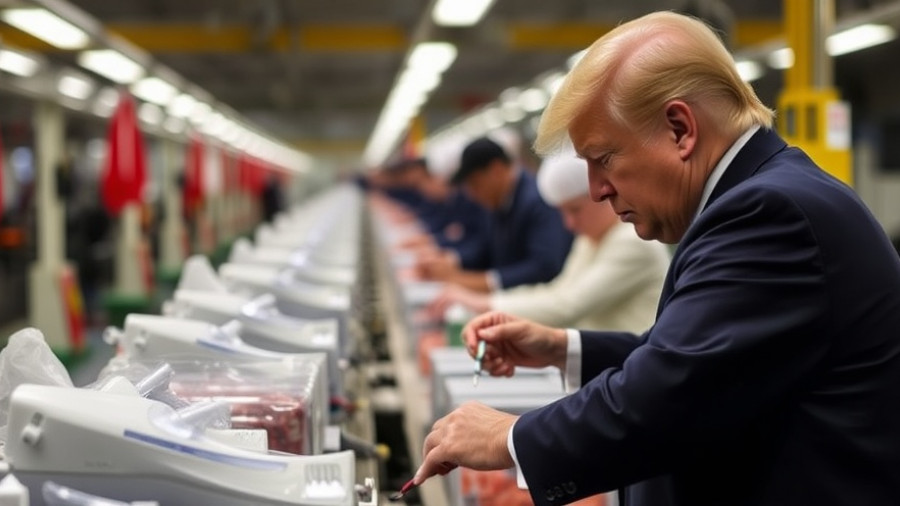
China's Manufacturing Strength: A Powerful New Strategy
As trade tensions flare once again between the United States and China, the latter is showcasing its formidable manufacturing capabilities as a critical asset in this ongoing showdown. In the bustling city of Yiwu, known for being home to the world’s largest wholesale market, China's strategy appears to prioritize resilience amid American tariffs. Even as exports to the U.S. face declining demand, China has effectively redirected its manufacturing prowess to capture markets in Southeast Asia, Africa, and Latin America.
Understanding the Importance of Yiwu in Global Trade
Yiwu stands as a testament to China's manufacturing might, operating vast complexes filled with all manner of products—from toys to electronics—that are ready for shipping worldwide. The recent unveiling of a new trade center highlights Yiwu's role as a global export hub, reinforcing the Chinese government's efforts to pivot from an over-reliance on American consumers. Despite the loss of U.S. buyers, local vendors like Gong Hao have adapted quickly, seeking opportunities in Europe and other Asian markets. This shift is crucial, considering that China's trade surplus is projected to break records this year, reaching over $875 billion.
Global Market Trends Amid Trade Disputes
Recent Customs data revealed that while exports to the U.S. plummeted by as much as 27% last month, overall Chinese exports surged by 8.3% compared to the previous year. This reflects a growing demand for Chinese goods that are increasingly sought after, even as tariffs remain high. The shift towards global markets, especially to Southeast Asia which saw a 15.6% increase in shipments, demonstrates not only resilience in face of tariffs but a strategic embrace of economic diversification.
The Economic Implications of Rising Exports
Experts are warning that while the increased exports provide a temporary boost for China’s economy, they also signal a deeper deflationary shock. With stagnant retail sales and diminishing domestic consumption, China's strategy to bolster exports while managing an intricate balance of trade relations becomes perilous. Nearly a quarter of the companies in Yiwu still rely on American business, complicating the pivot to alternative markets.
Risk Factors and Challenges Ahead
The broader implications of China's trade strategy cannot be ignored. As both nations engage in a war of tariffs, China must navigate potential retaliatory measures from other global trade partners. Economists like Gary Ng believe that the economic stakes are high, and if the situation escalates further, supply chains could suffer critical disruptions. Trade barriers from other countries could emerge, jeopardizing China's effort to stabilize its economy through enhanced exports.
Looking Ahead: Future Predictions and Opportunities
As the geopolitical landscape evolves, the prospect of further tariffs looms, particularly with looming threats from President Trump to escalate tariffs dramatically. China’s ability to sustain its trade surplus while facing domestic economic challenges will be closely watched in the upcoming quarters. The question remains whether China can successfully maintain its position as a manufacturing powerhouse while navigating this intricate web of global economic relationships.
Making Sense of the Economic Landscape
Understanding these intricate dynamics provides valuable insights into the global economy's future. For consumers, businesses, and policymakers, the ongoing trade tensions and shifts in China’s export strategy are not just abstract concepts but realities that could impact prices, availability of goods, and international relations for years to come. As we observe these developments, it’s essential to reflect on how interconnected our world truly is.
With such significant developments in global trade, being informed is imperative. Stay engaged with the news to understand how these changes may impact you and the economy as a whole.
 Add Row
Add Row 
 Add
Add 


Write A Comment